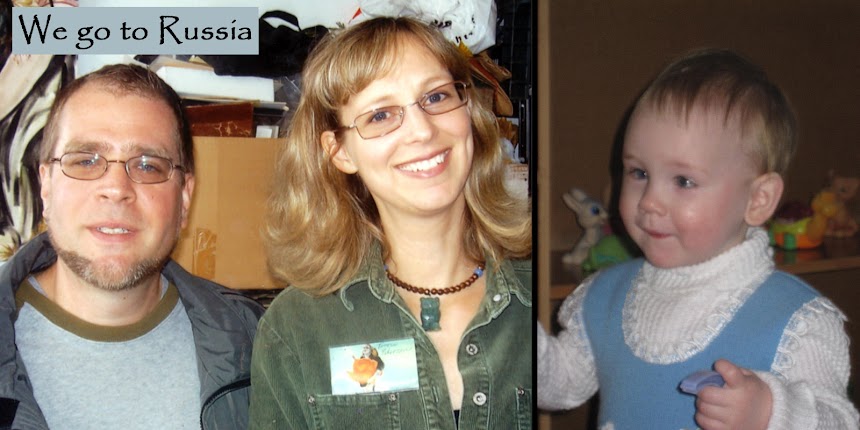We've
noted before that the Kotlas baby house used a lot of songs to teach and entertain the children, and Elena still likes singing. And not just singing - dancing, too. Moving to the music. I imagine she's not much different than most three-almost-four-year-olds in her love of movement, but she does indeed love it.
Knowing how much Elena loves dancing, we enrolled her in a toddler's dance class this past November. It's not a "dance" class, per se - it's more a "movement" class, where the kids practice moving their bodies and listening to the teacher's instructions.
What's more significant, though, is that Elena's attendance in class is something of a milestone for her. Since we adopted her back in September 2011, she's been out of our sight exactly once - a half-hour experimental stay with her grandmother. That half-hour stay went relatively smoothly, but we weren't sure how Elena would react to being "left" in a dance class, out of sight of either of her parents.
Lots of kids have separation anxiety, but it's a little different for adopted kids. Remember that Elena has
already been abandoned by her birth parents (and was rather precipitously removed from the orphanage by us), so, for her, a fear of abandonment isn't a nebulous and irrational fear - it's something she's experienced. But life goes on, and it seemed to us that participating in something fun, but short - like a dance class - would be good preparation for the longer separations of preschool, kindergarten, and first grade.
We prepared Elena as best we could-we visited the class the week previously, and explained to her exactly what was going on, and showed her where Mama would be sitting. Elena was pretty excited about the whole thing. Still, it was not without trepidation that we took her to her first class. Teresa dressed her in her leotard and tutu (which Elena loves, by the way), drove her to class, and watched her file in with the rest of the toddlers. Elena looked a little nervous, but...she loved it. Absolutely loved it.
 |
| Dance class tutu |
I think she enjoyed the dancing, but she also enjoyed being around kids her age again, something she's done only occasionally over the last year. So much so that any anxiety she might have had was quickly swept away.
That's a relief, but makes me wonder if I should have been worried in the first place. There are things that adopted kids in general - and Elena in particular, I'm sure - struggle with more so than most kids, but I wouldn't want my own worries to hold Elena back. Something for me to chew on.
But in the meantime, let her dance, let her dance, let her dance dance dance.
Thanks to the Bobby Fuller Four for the title of this post.




